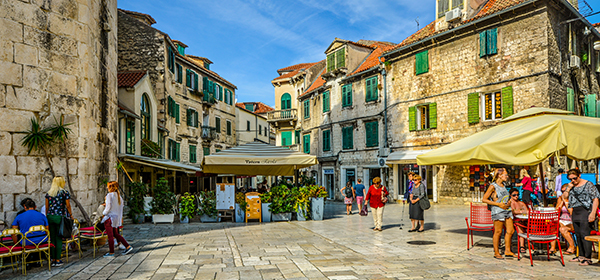Tips for Expats Driving in Split
Summary: Driving in a new country can be daunting. These tips offer insight into what to expect when driving in Split.

1. Understanding the Driving Culture
Driving in Split can be a bit challenging for newcomers due to the narrow streets and heavy traffic, especially during the summer tourist season. Croatian drivers are known for their aggressive driving style, so it's important to stay alert and cautious. Always adhere to the speed limits and traffic rules.
2. Car Recommendation
Considering the narrow streets and limited parking spaces in Split, it's advisable to opt for a smaller, compact car. This will make it easier to navigate through the city and find parking. Manual transmission cars are more common in Croatia, but automatic cars are also available.
3. Parking in Split
Finding a parking spot in Split can be quite difficult, especially in the city center and during the peak tourist season. Most parking spaces are paid, and the cost varies depending on the zone. The closer you are to the city center, the more expensive it is. There are also several public garages and parking lots available.
4. Driving with an International License
Foreigners can drive in Croatia with an international driving permit (IDP) along with their valid national driving license. This is valid for a period of up to six months. After this period, you will need to obtain a Croatian driving license.
5. Obtaining a Croatian Driving License
To obtain a Croatian driving license, you will need to pass a driving test in Croatia. This includes a theoretical and practical exam. Note that the test is conducted in Croatian, so you might need an interpreter if you don't speak the language. You will also need to provide a medical certificate proving you are fit to drive.
6. Be Aware of Pedestrian Zones
Split has several pedestrian zones, particularly in the old town. Be aware of these zones and avoid driving in these areas as fines can be hefty. Use public transportation or walk when visiting these parts of the city.
7. Always Have Change for Tolls
There are several toll roads in Croatia, so it's always a good idea to have some change with you. The tolls can be paid in either Croatian Kuna or Euros.
About the Author
 Joshua Wood, LPC joined Expat Exchange in 2000 and serves as one of its Co-Presidents. He is also one of the Founders of Digital Nomad Exchange. Prior to Expat Exchange, Joshua worked for NBC Cable (MSNBC and CNBC
Primetime). Joshua has a BA from Syracuse and a Master's in Clinical and Counseling Psychology from Fairleigh Dickinson University. Mr. Wood is also a licensed counselor and psychotherapist.
Joshua Wood, LPC joined Expat Exchange in 2000 and serves as one of its Co-Presidents. He is also one of the Founders of Digital Nomad Exchange. Prior to Expat Exchange, Joshua worked for NBC Cable (MSNBC and CNBC
Primetime). Joshua has a BA from Syracuse and a Master's in Clinical and Counseling Psychology from Fairleigh Dickinson University. Mr. Wood is also a licensed counselor and psychotherapist.
Some of Joshua's articles include Pros and Cons of Living in Portugal, 10 Best Places to Live in Ireland and Pros and Cons of Living in Uruguay. Connect with Joshua on LinkedIn.
Additional Information:
- Best Markets in Split
- Retire in Split Guide
- 7 Tips for Living in Split
- Pros & Cons of Living in Split
- Tips for Expats Driving in Split
- Discover the Best of Split
- Health Care in Split
- Cost of Living in Split
- Healthcare & Health Insurance in Croatia
- Best Places to Live in Croatia
- Real Estate in Croatia
- Pros & Cons of Living in Croatia
- 9 Important Tips about Healthcare for Expats and Global Nomads in Croatia
- Pros and Cons of Living in Croatia 2025





